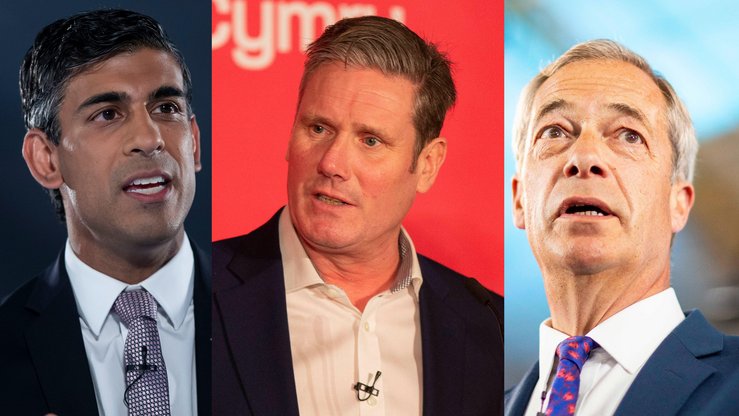
Things may be looking up at last. This year has brought a long string of bad news for the Conservatives, much of it self-inflicted. Yet over the last few weeks I have become a little more confident about Tory prospects than I have been for some time. There are two main reasons for this surprising burst of optimism.
First, last week’s growth figures. I am aware of the caveats, of course. The figures are notoriously unreliable, and one set of numbers does not change the experience of any actual voters; we are some way from any kind of feelgood factor. And as we can never forget after 1997, economic recovery does not necessarily lead to political recovery. This time, however, I think the chances are that it possibly could.
The electoral consequences of an upturn partly depend on how plausibly the government can claim responsibility for it. Fifteen years ago, the slogan ‘Yes It Hurt, Yes It Worked’ seemed ludicrous because it tried to claim that a series of humiliating fiascos, culminating in the ejection from the Exchange Rate Mechanism that left Britain free to set its own interest rates, had in fact been the plan all along. This time around, nobody is in any doubt – not least because Labour helpfully remind people at every opportunity – that the austerity drive that has helped keep the markets’ confidence in the Britain has been a deliberate policy. If by 2015 there is a tangible improvement in the economy where people feel their own circumstances beginning to improve, combined with serious progress on reducing the deficit, David Cameron and George Osborne will deserve credit and I think there is the possibility that they will get it.
Whether a government benefits at an election from a strengthening economy also depends on the alternative on offer. In 1997 the tired Tories, for whom growth was not enough to distract the public from their many other failings, faced an unbeatable opponent who seemed to understand the world better than they did. But in this parliament, Labour’s economic plan has been to rely on anti-cuts rhetoric while pointing out that the economy is not growing. As a strategy this always had its limitations. It certainly promises little against a government with a clear plan that voters believe is working. A falling deficit combined with undeniable growth threatens to leave Labour stranded.
The second reason for my more hopeful outlook is the strategy Cameron set out in his conference speech. With its emphasis on aspiration, this hit upon many of the themes of my research published in the week before the conference, Blue Collar Tories, which highlighted the need to show that Conservative policies would spread opportunity, not concentrate it. Alongside a clear economic strategy and policies on firm but humane welfare reform, this has the makings of an attractive proposition to the electorate.
If that is the basis of the message, the machinery is also being put in place to deliver it. The 40/40 target seats plan, which aims to hold the forty most vulnerable Conservative-held constituencies and win at least forty more – enough for an overall majority – is well thought-out and deliverable, with new campaign managers dedicated to the operation. This work can build on the experience of the 2010 target seats campaign, which delivered a net gain of 23 Tory seats over and above what would have been achieved with a uniform national swing.
There is also the opportunity to learn from mistakes. One of these was to confuse or even contradict the consistently positive local message delivered over two or three years with an opaque and often negative national campaign. Research should not be ignored, as it too often was (though not by the target seats team). We should also look again at the place of televised debates. Ideally these would include only the two serious candidates to be Prime Minister. If this cannot be agreed, the party should consider whether the disruption to the campaign – in terms of preparation time and the potential for nasty surprises – makes taking part worthwhile.
Finally we need to ensure we do not repeat the errors of campaign organisation that were perpetrated last time. As Janan Ganesh correctly notes in his biography of George Osborne (which I reviewed in Saturday’s Guardian), one of the problems with the 2010 campaign was that it was “run” by a handful of senior figures with different ideas, none of whom had the authority to overrule anybody else. This chaotic situation must be avoided next time – but one sure way to repeat it would be to bring in another big figure with his own ideas about how campaigns should be run.
That is why I believe it would be a mistake to hire Lynton Crosby. Not because it would lead to a re-run of the immigration-dominated 2005 campaign (as argued in the Sunday Telegraph by my old friend Peter Oborne, who, not for the first time, has come to the right conclusion but for the wrong reason), but because I do not think he is needed and would become a distracting influence. Cameron and Osborne and their team have started to develop the strategy; Grant Shapps and the incomparable Stephen Gilbert will see that it is put into effect on the ground. Crosby will have his own views about what the message should be – hence his reported determination to control the party’s polling, not just implement the campaign – and how things should be done in the field. Far from ensuring a single strong manager, this is a recipe for the kind of conflict and confusion that dogged the 2010 campaign and helped to cost us the majority we could have won.
The Tories challenge is no less great than it was before: to attract new voters to the party and win back those who have defected since 2010, at a time when Ed Miliband is buoyed by an army of former Lib Dems. But at last, the Conservative Party has the beginnings of a plan and a team in place to deliver it. Let’s give them a chance to make it work.


